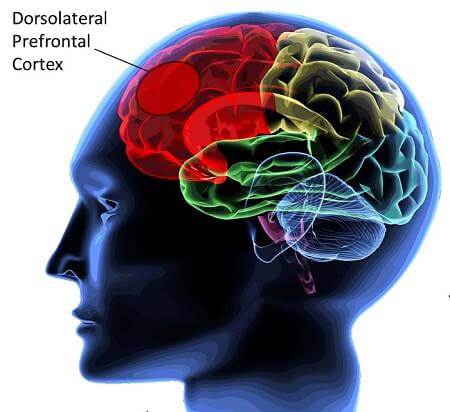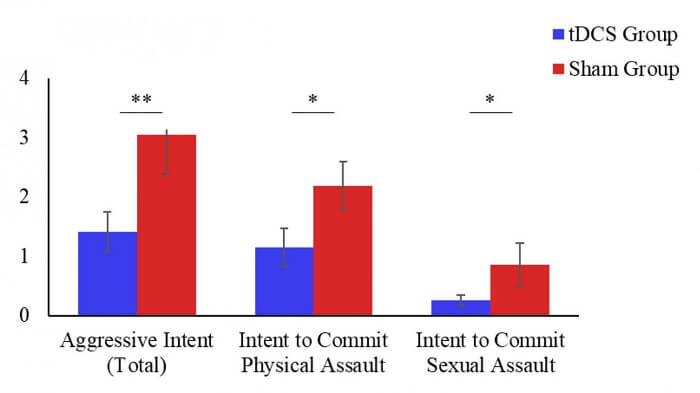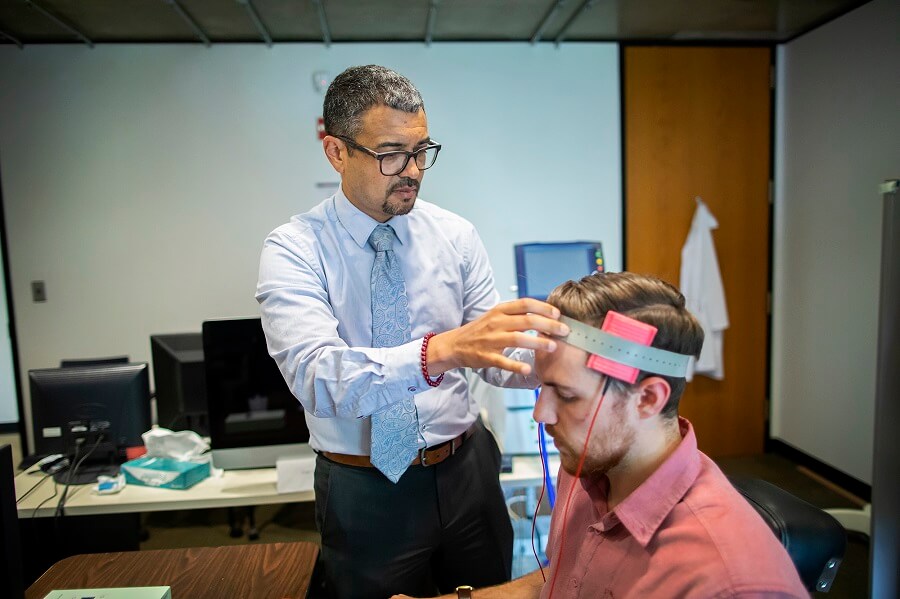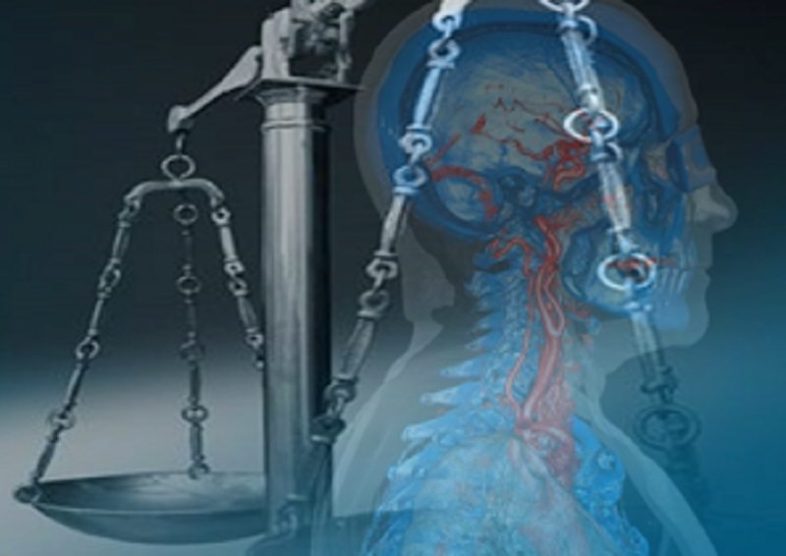Interfering with our brain’s natural electrical circuits by applying low current electricity through the skull is now being promoted as a non-invasive and safe method to manipulate executive cognitive functions and alter our resulting behavior.
Used so far in experimental research, these methods have shown improvement in working memory and attention processes getting researchers excited about their potential. For the first time, transcranial direct current stimulation or tDCS has now been used in a research setting in the fight against violent crime, with researchers from Nanyang Technological University in Singapore and the University of Pennsylvania claiming violent intent can be reduced by up to 50% after just one 20 minute session.
With advancements in neurocriminology shifting focus towards biological factors holding a greater influence on violent and aggressive behavior, researchers posed the question in this study of whether increasing the response in targeted cells in the prefrontal cortex of the brain would reduce the likelihood of the individual engaging in violent behavior. An ambitious hypothesis previously unexplored but with a great deal of potential should they achieve positive results.

The dorsolateral prefrontal cortex of the brain sits just behind the forehead and is the area research has linked to being less active or even smaller in those who show aggressive and antisocial behavior. Furthermore, this area controls the higher cognitive functions of our brains where more complex mechanisms such as working memory, action planning, and selective attention take place. Information is processed here after sensory information from our eyes and ears has been taken in.
Referred to as executive functions, these processes have been an attractive target for psychological research for many years and are prime candidates for manipulation with a view to controlling and altering behavior.
In a collaborative research paper entitled “Stimulation of the Prefrontal Cortex Reduces Intentions to Commit Aggression” published in the Journal of Neuroscience in July 2018, Assistant Professor of Psychology Dr. Olivia Choy from Nanyang Technological University in Singapore, Professor of Criminology and Psychiatry Dr. Adrian Raine and Assistant Professor of Neurology Dr. Roy Hamilton both from the University of Pennsylvania have reported successful and promising results in an initial study using direct current stimulation in an experimental setting with volunteers.
Transcranial direct current stimulation (tDCS) is a neuroscientific method of introducing electric currents directly to targeted areas of the brain in order to alter how cells in those areas communicate with each other and therefore potentially alter behavior.
This sort of intervention is minimal in its invasive nature, individuals simply have electrodes placed on the relevant areas of their skull and sit quietly while an experimenter activates various levels of electric current. TDCS works by delivering this current for a prolonged period of time, in this experiment for 20 minutes.
A total of 81 volunteers, 36 males, and 45 females were randomly assigned to either the tDCS experimental condition where they received direct brain stimulation, or to a placebo or ‘sham’ condition where they experienced the same 20-minute session but received only 30 seconds electrical brain stimulation. With low currents manipulated slowly and gently by researchers, subjects do not generally feel any sensations during the procedure and therefore these volunteers did not know which condition they were in when they took part in the study.
The day after the sessions, researchers presented each volunteer with hypothetical scenarios. They were shown images and materials depicting a physical assault, a person smashing a beer bottle over another person’s head, and a sexual assault and asked to rate on a scale of 0-10 what the likelihood was of carrying out each assault themselves in real life. They were also asked to rate using the same scale how morally wrong they believed each act was. Researchers were then able to look at the data as a whole for the two groups to see if there were any clear differences in their ratings compared to each other.
The results are indeed surprising. In the experimental group, for those who received direct brain stimulation, there was a 47% reduction in intent to commit assault and a 70% reduction in intent to commit sexual assault compared to the sham group who received no brain stimulation. Furthermore, researchers noted that 31% of these significant reductions in intent were due to volunteers after brain stimulation giving a higher rating to how morally wrong they thought these acts were. Essentially an increase in perception of moral wrongfulness, in turn, reduced ratings of the likelihood to carry out these violent acts.

It is no surprise that such brain stimulation methods have been picked up for criminology studies to be used in ways that could have practical and beneficial results in the treatment of violent offenders. Standard rehabilitation techniques are not often effective, especially for criminals with long histories of violence. It is a revolving door cycle of violent incidents, prison time and further violent incidents and science is understandably keen to develop new approaches to interrupt this cycle and promote effective behavioral changes in these individuals.
“The ability to manipulate such complex and fundamental aspects of cognition and behavior from outside the body has tremendous social, ethical, and possibly someday legal implications.” – Neurologist Roy Hamilton
The problem is simply we cannot see inside the mind. While we can look at the brain and how it functions under certain conditions through neuroimaging, we cannot observe the thought patterns and decision-making behind forming aggressive intent or other cognitive mechanisms involving information processing and decision-making.
Researchers believe that while society’s boundaries and expectations, the complexities of nurture, and issues such as poverty and racial discrimination, are significant components of violent acts of crime, the biological factor; that influences violence inside an individual due to their brain structures and mechanisms, is an area that needs more attention. Professor Adrian Raine a co-author of the study and a leader in neurocriminological research said this study represents “…benign approaches to changing biology in a sensible manner in order to change behavior and reduce violence and victimization.”
Directly changing the nervous system, or ‘augmenting behaviors’ as Professor Vincent Clark puts it in his article “The Ethical, Moral and Pragmatic Rationale for Brain Augmentation” published in 2014 in Frontiers in Systems Neuroscience, is a method that has become increasingly popular within research and it is an exciting area.
Transcranial direct brain stimulation specifically uses a 9-volt battery which produces a 1-2 mA current that can be controlled very effectively without the need for medical training or medical professionals on standby. Applying this current via small electrodes placed on the scalp can lead to changes in behaviors, believed to be due to changing the neurochemistry in the brain by adding this external current for extended periods. However, while these results are promising we don’t actually know why applying low electric current directly to the brain like this has enhancement effects on cognitive functions and in this case, promotes a reduction in violent intentions.

Clark offers an interesting discussion on neuroenhancements in the real world and just how useful, safe, and ethical they are. Reading such a discussion acutely highlights just how far we have come in technology and science to even be seriously considering the application of external electrical interventions to our brains in order to enhance our abilities and capabilities. The concept that our future is scientific and computer-led is edging ever closer.
In this tCDS study focused on violent intent, researchers highlight “This first known application of prefrontal tDCS to intentions to commit aggression takes a modest step towards advancing knowledge about the neural mechanisms that regulate aggression.” Certainly, the authors of this study are taking a humble and unassuming approach to their results aware a great deal more research in this area is needed. Furthermore, there are areas of this research that need to be taken into account when looking at their results.
The volunteers involved in the study were selected from a healthy population and not representative of a group who is inclined to, or has in the past, carried out violent acts. With no history of violence, mental illness, or criminal intentions, or significantly any indication their prefrontal brain regions, executive functions, or mechanisms might be damaged or impaired in any way, does raise questions on the validity of these results in terms of applying them to people with violent tendencies in the real world. A change in their intentions toward violent acts and perceptions of moral wrongfulness may not be an accurate reflection of how those already engaged in violence may or may not benefit from such interventions.
A change in intention does not necessarily mean they would not go on to actually carry out violent acts. Science does have to start somewhere however and as highlighted by the first author of this study Oliva Choy, maybe a change in physical violent behavior starts with a change in intention, and repeated sessions of direct brain stimulation may hold the key to achieving this result.
Another potentially problematic area in this study is the gender differences in both groups. In the sham group who received no brain stimulation, there were an equal number of 21 men and 21 women, however, in the experimental group who did receive the stimulation there were 24 women and 15 men. We know that women are generally less violent than men and therefore are most likely to have less violent intent in the first place. Furthermore, asking females to identify with a male in the hypothetical scenario of a male carrying out a sexual assault on a female and expecting accurate ratings on their own likelihood of carrying out such an assault is questionable. Such factors may have skewed the results in favor of the experimental group for significantly less intent and more moral wrongfulness compared to the gender-balanced control group.
“We’re trying to find benign biological interventions that society will accept, and transcranial direct-current stimulation is minimal risk. This isn’t a frontal lobotomy. In fact, we’re saying the opposite, that the front part of the brain needs to be better connected to the rest of the brain.” – Neurocriminologist Adrian Raine
The potential to develop a non-invasive method of intervention that could significantly alter tendencies, intent, and action in violent and aggressive individuals is an intriguing step forward and could provide the breakthroughs needed to interrupt the cycle of violence. More research and specifically studies that can be validated against real-world violent acts are needed, but the use of direct brain stimulation may be an area in years to come that shows the greatest promise. However, it is an area that should proceed with caution.
Various media have depicted using science for such enhancements to human abilities but with such possibilities now crossing over into the real world, even on a basic and simple level at this stage, where will this end? I cannot help but feel that essentially playing with the brain’s neurochemistry and internal mechanisms that we still do not fully understand is a very dangerous game.
The push for manipulation techniques to steer behavior into acceptable territories and enhancement of our cognitive functions for increased abilities, better, faster, and more accurate for longer durations could just as much go horribly wrong as it could be a positive intervention. The intention to promote positive change in behavior could, in fact, have the opposite effect. Furthermore, while this is all very exciting and has a great deal of potential if used in the right way, we have absolutely no idea what such interventions and tinkering with nature’s creations could have in the future.
“The continued pursuit of cognitive and neuro-enhancement will help us to improve our quality of life, reduce suffering from brain and mental illness, and enhance our chances of survival long-term.” Vincent Clark writes at the end of his discussion paper. A bold and inspiring statement but how do we know that such neuro interventions will enhance chances of survival in the long-term? It is still a relatively unknown area and this wave of powerful new prospects, enhancements, and opportunities to tweak and alter could come crashing down in a devastating blow in the future.
- Begley, S. (2018) Can Zapping People’s Brains Reduce Violence? Controversial Study Sees Potential. In The Lab. Stat News.
- Choy, 0., Raine, A., and Hamilton, R.H. (2018) Stimulation of the Prefrontal Cortex Reduces Intentions to Commit Aggression: A Randomized, Double-Blind, Placebo-Controlled, Stratified, Parallel-Group Trial. Journal of Neuroscience. 38 (29) pp6505-6512; DOI:10.1523/JNEUROSCI.3317-17.2018
- Clark, V. (2014) The Ethical, Moral, and Pragmatic Rationale for Brain Augmentation. Front. Syst. Neurosci. DOI:10.3389/fnsys.2014.00130
- De Berker, A.O., Bikson, M., and Bestmann, S. (2013) Predicting The Behavioural Impact of Transcranial Direct Current Stimulation: Issues and Limitations. Front. Hum. Neurosci. DOI:10.3389/fnhum.2013.00613
- Hlavinka, E. (2018) Electrical Brain Stimulation Cuts Violent Impulses. Med Page Today
- Innovation Toronto (2018) Could The Intent To Commit Assault Be Diminished By Electrical Brain Stimulation? Brain Stimulation
- Reinhart, R.M.G., Cosman, J.D., Fukuda, K. et al. (2017) Using Transcranial Direct-Current Stimulation (tDCS) to Understand Cognitive Processing. Atten Percept Psychophy. 79: 3. DOI:10.3758/s13414-016-1224-2
- Thair, H., Hollway, A.L., Newport, R., and Smith, A.D. (2017) Transcranial Direct Current Stimulation (tDCS): A Beginner’s Guide for Design and Implementation. Frontiers in Neuroscience, Vol 11, pp641. DOI:10.3389/fnins.2017.00641
Guy, F. (2018, Aug 15) Electrical Brain Stimulation Reduces Violent Intent by 50%, Claim Researchers. Crime Traveller. Retrieved from https://www.crimetraveller.org/2018/08/electrical-brain-stimulation-reduces-violent-intent











































Your website has exceptional material. Bookmarked!